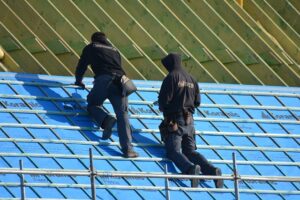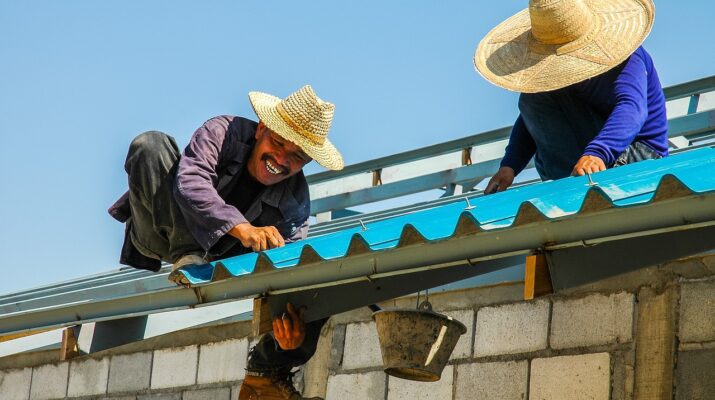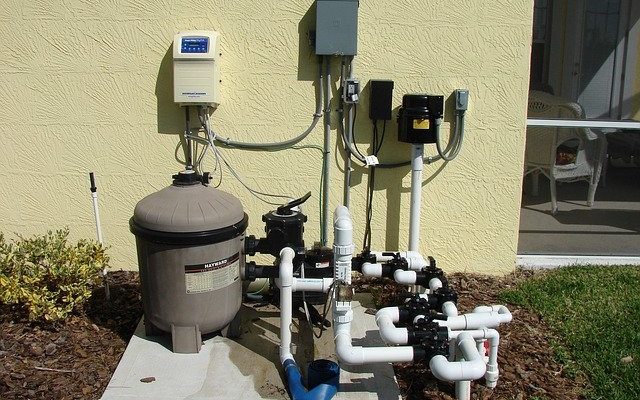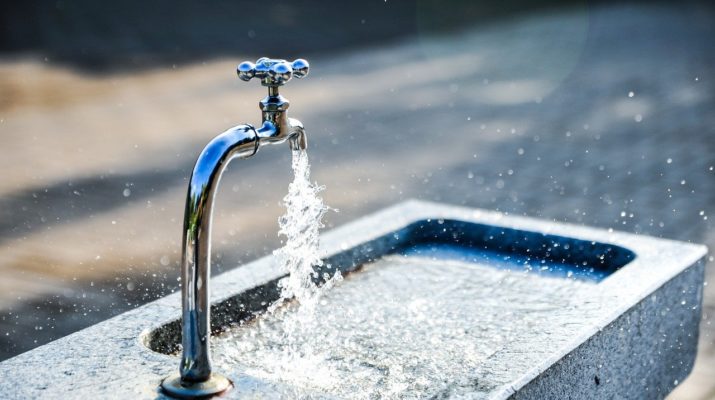Few things are as critical—yet often overlooked—regarding homeownership as the roof over your head. A sturdy roof enhances your home’s curb appeal and safeguards your family and belongings from the elements. However, many homeowners unknowingly overlook subtle signs that could spell disaster down the line. From mysterious stains on your ceiling to curling shingles waving a warning flag in the wind, these roofing red flags can lead to costly repairs if ignored.
In this guide, we’ll help you become a vigilant protector of one of your most significant investments by identifying common roofing issues before they escalate into major headaches. Buckle up as we dive into the world of roofing red flags and arm yourself with knowledge that could save you thousands!
Shingle Damage and Granule Loss
 One of the most common signs of roofing trouble is shingle damage. Shingles that are cracked, curled, or missing can indicate underlying issues with your roof. Granule loss is another red flag; if you find excessive granules in your gutters or downspouts, it could signal that your shingles are deteriorating. Granules are designed to protect shingles from UV rays and weather damage, so their loss can compromise the roof’s effectiveness and lead to more severe issues. Regularly inspecting your shingles for damage and checking for granules in gutters can help you catch these problems early.
One of the most common signs of roofing trouble is shingle damage. Shingles that are cracked, curled, or missing can indicate underlying issues with your roof. Granule loss is another red flag; if you find excessive granules in your gutters or downspouts, it could signal that your shingles are deteriorating. Granules are designed to protect shingles from UV rays and weather damage, so their loss can compromise the roof’s effectiveness and lead to more severe issues. Regularly inspecting your shingles for damage and checking for granules in gutters can help you catch these problems early.
Roofer Corpus Christi can also provide professional shingle inspections for general maintenance or following severe weather events.
Leaks and Water Stains
Water leaks are a clear indication that your roof may be compromised. Look for water stains on ceilings, walls, or around chimneys and skylights, as these can signal leaks. Water stains often result from a compromised roofing system, such as damaged flashing or deteriorated shingles. It’s crucial to address leaks promptly to prevent further damage to your home’s interior and structural elements. Regular roof inspections can help identify potential leak sources before they cause significant damage.
Moss and Algae Growth
Moss and algae growth on your roof can be more than just an aesthetic concern; they can contribute to roofing deterioration. Moss retains moisture, which can lead to the rotting of roofing materials and the degradation of shingles. Algae, while less harmful, can still indicate poor ventilation and moisture issues. If you notice significant moss or algae growth, it’s essential to have your roof professionally cleaned and to investigate underlying problems such as inadequate drainage or ventilation.
Sagging Roof Deck
A sagging roof deck is a serious red flag that indicates structural problems. This can result from various issues, including water damage, improper installation, or excessive weight from snow and ice. A sagging roof can compromise the integrity of your home and may require significant repairs or reinforcement. If you notice any sagging or uneven areas on your roof, it’s crucial to consult with a professional roofer to assess the situation and recommend appropriate solutions.
Damaged or Missing Flashing
Flashing seals joints and transitions on your roof, such as around chimneys, vents, and skylights. Damaged or missing flashing can lead to leaks and water infiltration, particularly during heavy rain. Regularly inspect flashing for signs of damage, such as cracks, rust, or gaps. Ensuring that flashing is in good condition and properly installed can prevent leaks and extend the life of your roof.

Roof Age and Wear
The age of your roof is an essential factor in its overall health. Most asphalt shingle roofs have a lifespan of 15-20 years, though this can vary based on material and installation quality. If your roof is approaching or has surpassed its expected lifespan, it’s essential to conduct regular inspections and be vigilant for signs of wear. Older roofs are more susceptible to damage and may require frequent maintenance or eventual replacement.
Poor Ventilation
Proper ventilation is crucial for maintaining the health of your roof and home. Inadequate ventilation can lead to excessive heat buildup, which can cause shingles to deteriorate …





 The water from your well will likely be contaminated with various microorganisms, including bacteria and viruses. While most of these contaminants are not harmful to humans, some can cause severe illness or even death. That’s why it’s crucial to have your well water regularly tested for contaminants. You can contact your local health department or the Environmental Protection Agency (EPA) for more information on water testing. It’s also a good idea to have your well water tested if you notice any changes in your water’s taste, odor, or color.
The water from your well will likely be contaminated with various microorganisms, including bacteria and viruses. While most of these contaminants are not harmful to humans, some can cause severe illness or even death. That’s why it’s crucial to have your well water regularly tested for contaminants. You can contact your local health department or the Environmental Protection Agency (EPA) for more information on water testing. It’s also a good idea to have your well water tested if you notice any changes in your water’s taste, odor, or color. If you decide to buy this home, having your well regularly inspected and maintained is a must. An inspection will identify potential problems with the well, and a maintenance plan will keep the well in good working condition for years to come. You can enjoy fresh, clean water for decades to come by simply ensuring that the well is properly protected. Aside from that, you don’t need to worry about the quality of your healthy water as long as you have it regularly tested and maintained. Living in a home with well water is not a bad idea.
If you decide to buy this home, having your well regularly inspected and maintained is a must. An inspection will identify potential problems with the well, and a maintenance plan will keep the well in good working condition for years to come. You can enjoy fresh, clean water for decades to come by simply ensuring that the well is properly protected. Aside from that, you don’t need to worry about the quality of your healthy water as long as you have it regularly tested and maintained. Living in a home with well water is not a bad idea.
 There are many reasons you need to install a water treatment system in your home. Whether the quality of the drinking and cooking water is poor or contaminants such as lead, arsenic, fluoride, and chlorine have been found in it, installing this device will help improve its quality! It can be difficult for homeowners to find high-quality water sources, so a water treatment system is a perfect solution!
There are many reasons you need to install a water treatment system in your home. Whether the quality of the drinking and cooking water is poor or contaminants such as lead, arsenic, fluoride, and chlorine have been found in it, installing this device will help improve its quality! It can be difficult for homeowners to find high-quality water sources, so a water treatment system is a perfect solution! There are a few different types of water treatment systems to choose from. One type is a filtration system that will remove contaminants such as lead, arsenic, fluoride, and chlorine from your sources! They may also improve the taste and smell of your tap or water from wells by removing any harsh chemicals present in it! Another option you have is choosing a water softening system. This system will remove hard water minerals like magnesium and calcium from your water, which can leave spots on dishes and plumbing fixtures over time!
There are a few different types of water treatment systems to choose from. One type is a filtration system that will remove contaminants such as lead, arsenic, fluoride, and chlorine from your sources! They may also improve the taste and smell of your tap or water from wells by removing any harsh chemicals present in it! Another option you have is choosing a water softening system. This system will remove hard water minerals like magnesium and calcium from your water, which can leave spots on dishes and plumbing fixtures over time!
 Mortgage rates are still relatively low right now, but they could go up in the future. If you’re concerned about what will happen if interest rates rise, you can choose to lock in your interest rate when you get preapproved. It means that your interest rate won’t change even if rates do go up, but it also means that you’re limiting your options. Only you can decide whether locking in a low rate now is worth it to you, but if interest rates do go up substantially, you might regret not having the option of getting something better later on down the line.
Mortgage rates are still relatively low right now, but they could go up in the future. If you’re concerned about what will happen if interest rates rise, you can choose to lock in your interest rate when you get preapproved. It means that your interest rate won’t change even if rates do go up, but it also means that you’re limiting your options. Only you can decide whether locking in a low rate now is worth it to you, but if interest rates do go up substantially, you might regret not having the option of getting something better later on down the line.
 This might be the first question that popped into your head, and it is perfectly reasonable to think this way because most of us can’t see iron with the naked eye. Its source of origin can explain the reason why iron is in your water supply. Water from deep wells, rivers, and lakes will have a higher concentration of iron than that which comes directly from the tap. Iron filters remove harmful contaminants like rust and silt to give you clean drinking water for just pennies per gallon! So next time you’re filling up your water bottle, think about how much you appreciate those little drops of life.
This might be the first question that popped into your head, and it is perfectly reasonable to think this way because most of us can’t see iron with the naked eye. Its source of origin can explain the reason why iron is in your water supply. Water from deep wells, rivers, and lakes will have a higher concentration of iron than that which comes directly from the tap. Iron filters remove harmful contaminants like rust and silt to give you clean drinking water for just pennies per gallon! So next time you’re filling up your water bottle, think about how much you appreciate those little drops of life.